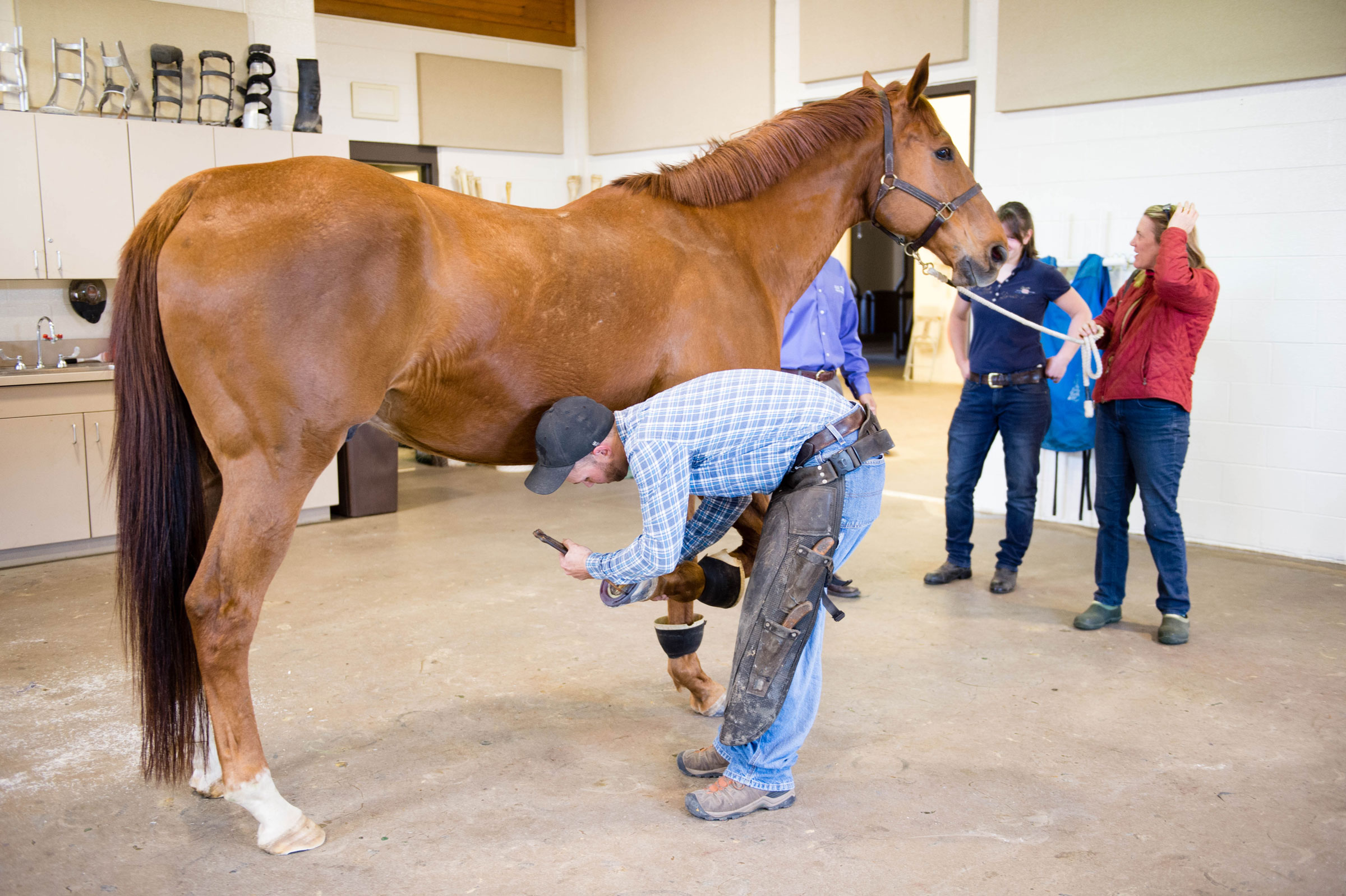
Abnormal impact and injury to underlying tissues of the sole can result in a deep bruise. In some cases, sole bruising results in lameness but in others, decline in a horse’s overall performance without lameness might be the first sign that something is wrong.
Hoof bruising is likely in a horse with thin soles or if part of a horseshoe contacts the sole. Bruising also occurs due to an out-of-balance hoof trim that leads to consistent impact of one side of the hoof rather than having equal contact across the bottom of the hoof. Bruising can occur from rocky terrain or as a result of pressure from undetected stones or pebbles trapped by a horseshoe.
An over-zealous trim or excess wear of the solar hoof structures from harsh terrain are common reasons for sole bruises. In white hooves, pink bruised areas are sometimes visible on the outside of the hoof wall, on the white line or on the sole. Deep bruising causes blood or serum pockets to form beneath the sole, and often the horse is lame. Excess inflammation of sensitive tissue within the hoof can eventually develop into a foot abscess.



